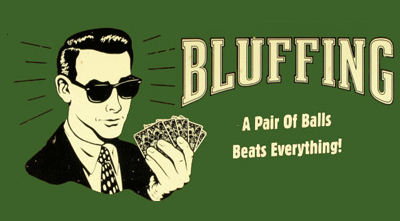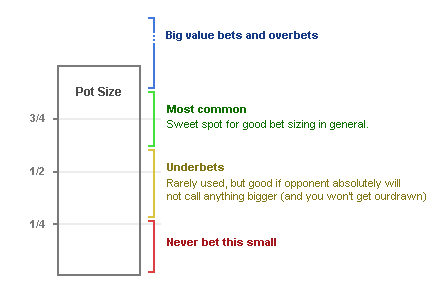Bluffing at poker is an integral part of the game. After all, it’s a skill game, meaning that you can’t win purely based on the two cards you’re dealt. I’m reminded of Betfair pro Annette “Annette_15” Obrestad, who once took down a 180-man tournament on PokerStars while only looking at her cards once. You read that right. Obrestad only looked at her cards one time during the entire event. In other pots, betting and bluffing served as her major success factors.
What can you look for in order to determine whether a player is bluffing or telling the truth on the virtual felts? Here’s a short list of what to look for.
Catching Poker Bluffs By Watching Betting Speed

Although this may depend on how many tables an opponent has open, their bet speed may be indicative of hand strength. However, it ultimately depends on the player. Opponents who have their action pre-selected, which you’ll notice by instantaneous action in the hand when it’s their turn, paint a straightforward picture of hand strength. If someone is auto-calling, chances are they’re on a draw or have a marginal hand worth seeing another street with. Don’t be afraid of what they’re holding, yet.
Players who insta-raise manually are a bit tougher to diagnose. They may hold the nuts and raise to extract value in the hand. Alternately, they may be on a draw, but desire to semi-bluff to take down a pot. It’s important to take notice of what your opponents show down following instantaneous bets. Were they on a draw? Were they bluffing? Did they have the nuts?
Opponents who deliberate when it’s their turn to act may have a strong hand. I say “may” because it’s also possible that action on other tables is holding them up. However, more often than not, players who think for quite a while before acting are contemplating how to play a strong hand. Questions like how to extract maximum value and whether to put in a raise or just smooth call are going through their head, so proceed with caution.
Bet Sizing is a Common Poker Bluff Tell
Similar to bet speed, bet sizing is another giveaway of hand strength online. At the lower limit tables, almost without fail, bet size directly relates to hand strength. If a person bets big, they almost assuredly have a monster. If a person checks or makes a minimum bet, chances are that you probably have them crushed with a pair. Low-limit players don’t think like professionals. Trapping and check-raising rarely happen. Instead, players bet when they have the goods and check or fold when they don’t.

As you move up the ranks, dissecting a player’s hand by virtue of their bet size becomes much more complicated. However, players tend to repeat their actions, which you’ll want to keep an eye out for. Repetitive bets may be indicative of strength, so if you see a player raising 2.5 times the big blind pre-flop and then all of a sudden make it three times the big blind, beware. At the higher stakes, look for patterns in bet sizing and take copious notes on opponents to exploit that information in the future.
Use of Chat is a Way to Catch Online Poker Bluffing
 At the live poker tables, pros like Mike Matusow and Phil Hellmuth flex their vocal cords to induce calls, raises, or folds from opponents. Online, the only way to communicate is through the chat box (as pictured). Pay attention to what opponents say during hands. Are they trying to induce a fold? Are they trying to get you to call? Most of the time, begging for a call is indicative of a big hand, while begging for a fold rarely happens. Take what players say in the chat with a grain of salt, as your opponents can literally say anything they want to without repercussion. You’ll also get players that simply “rail” the game and cheer on their friends. You’ll see an example of this on the left.
At the live poker tables, pros like Mike Matusow and Phil Hellmuth flex their vocal cords to induce calls, raises, or folds from opponents. Online, the only way to communicate is through the chat box (as pictured). Pay attention to what opponents say during hands. Are they trying to induce a fold? Are they trying to get you to call? Most of the time, begging for a call is indicative of a big hand, while begging for a fold rarely happens. Take what players say in the chat with a grain of salt, as your opponents can literally say anything they want to without repercussion. You’ll also get players that simply “rail” the game and cheer on their friends. You’ll see an example of this on the left.
Stay tuned to MacPoker.com for more poker strategy tips.

Comments are closed.